Best Ab Exercise In 30 Seconds Or Less
BEST AB EXERCISE IN 30 SECONDS OR LESS (ISSUE 107)
By Diane Gold
Best ab exercise in 30 seconds is so simple, protects the back, is adjustable based on fitness level and can be done by almost anyone. It doesn’t take equipment or getting in shape to do it. It’s sexy for trainers, gym buffs or never-work-out-ers. And it’s practical.
THE REASON FOR THE BEST AB EXERCISE
The reason I’m giving it away is simple and timely. Here’s the story.
 I saw a photo and exercise routine one of my (actual) friend’s shared on a social networking site. My friend is an avid athlete and 30-year yogi, which means she is strong and fit. She communicates with many people who are also strong and fit. So when she shared a plank photo and instructions for a plank exercise, starting with 20 seconds per day, she was probably directing it to the fit crowd. I immediately responded to her post with an EXTREME CAUTION comment because…
I saw a photo and exercise routine one of my (actual) friend’s shared on a social networking site. My friend is an avid athlete and 30-year yogi, which means she is strong and fit. She communicates with many people who are also strong and fit. So when she shared a plank photo and instructions for a plank exercise, starting with 20 seconds per day, she was probably directing it to the fit crowd. I immediately responded to her post with an EXTREME CAUTION comment because…
A plank is a stationary exercise where we maintain a flat horizontal position, emulating a piece of plywood, holding ourselves off the floor using our abdominal muscles. If we have abs from regular correctly executed workout, whether in martial arts, swimming, gym-ing or dancing; this exercise may be a wonderful treat.
BACK INJURY
 Most people are attracted to an interesting workout photo that gets passed around. What was missing, and I’m not pointing fingers, was a super big warning sign. Having owned an active martial arts school for over 15 years, I have heard many stories about injury due to improper workout. I have helped show many a newbie student why proper alignment is everything and that haste can cost precious training time as we heal from beginner, didn’t-follow-directions injuries.
Most people are attracted to an interesting workout photo that gets passed around. What was missing, and I’m not pointing fingers, was a super big warning sign. Having owned an active martial arts school for over 15 years, I have heard many stories about injury due to improper workout. I have helped show many a newbie student why proper alignment is everything and that haste can cost precious training time as we heal from beginner, didn’t-follow-directions injuries.
 It is extremely easy to hurt the back doing the plank exercise, even though it is a wonderful technique if we have the abs for it. It’s whether or not they are strong enough to hold our entire body upon command. And that is what today’s exercise is about. Back Injury
It is extremely easy to hurt the back doing the plank exercise, even though it is a wonderful technique if we have the abs for it. It’s whether or not they are strong enough to hold our entire body upon command. And that is what today’s exercise is about. Back Injury
YOGA AND TAI CHI
Any time extreme fitness is done, injuries abound. That includes yoga, even though it is a spiritual non-martial art. Typically, it’s because people are holding one position. If they have been taught proper alignment, they have a great chance of never being injured. Without it, many injuries occur. In 2010, the Consumer Product’s Safety Commission reported 7,369 yoga injuries. Many of them were back injuries.
Let’s state here that most of the time, experienced teachers in any discipline who understand movement will make certain to teach basics before any aggressive movement exposes the student to harm. There are many inexperienced teachers out there in every discipline, and they don’t understand the importance and the essence of basic training. They also may minimize safety as a priority.
I just read an Indian newspaper that said that tai chi is taking over yoga. I’m not sure on what it’s based or how valid it is. I do know, from having taught tai chi for over 15 years, that tai chi is a non-rigid, flowing way. Each movement, like time-lapse photography, is always new as we, the creator of the movement, are always changing. This liquid movement and traditional dedication to basics are two reasons tai chi is known to be safe with few injuries.
EFFICIENCY AND SIT-UPS
 Most of us want efficiency and want the shortest road toward what we consider perfection that we can take. That means we would like to bypass any frills and get right to the real work. Yet, some exercises, worldwide, put, at least, 50% fluff in them.
Most of us want efficiency and want the shortest road toward what we consider perfection that we can take. That means we would like to bypass any frills and get right to the real work. Yet, some exercises, worldwide, put, at least, 50% fluff in them.
Take the sit up. Most people know the sit up to involve 90 degrees of movement: from a sitting up position to a lying down position. Wrong! Ehhhhhhhnnng! Unnecessary.
Much of the 90-degree sit-up is wasted time and energy, hurts the back and doesn’t do what we want it to do. And, it’s so stressful that we stop doing sit ups shortly after we begin because we don’t love them or we are already feeling twinges in our back or side. Soooooooo many people injure themselves with sit-ups because the exercise is designed to strengthen the abs without protection for the back.
So, what’s the answer?
DON’T TRY THIS AT HOME FOLKS?
I was so moved by seeing the plank exercise without any qualifying comments and by knowing how harmful it can be to the unsuspecting newcomer or restarter that I was moved to reveal this one simple secret that protects the back, is quite adjustable to people who are just starting out and can be challenging to advanced movers and shakers.
You know the warning labels on new equipment that says,
“Don’t try this at home, folks?”
I really wanted to say that, then ease into why the plank exercise can be dangerous if not done properly. Since most people don’t understand that the strong abdominal plate (the core) allows us to hold our back in a plank-like position, the caution lights would be appropriate on this plank exercise.
BEST AB EXERCISE IN 30 SECONDS OR LESS
Instead, here’s the best ab exercise in 30 seconds or less. It is designed for safety and effectiveness. If you need a towel under your coccyx or want a towel or mat, do it! The harder the surface, the better, though.

1) Lie down on the floor with knees raised at shoulder width apart, feet flat on the floor.
2) Place the arms across the chest, elbows flat on the body. This will protect the back from strain.
3) Adjust the legs so that the distance between the knees and the belly button is the same or more than the distance between the knees and the toes.
4) Press the lower back into the floor from the belly button/abs region throughout the exercise. This will protect your back from curving the wrong way or straining.
Now comes the adjustable part.
5) Keeping the spine as straight as possible with the back pressed against the floor, lift the shoulders a comfortable amount off the floor.
6) Breathing normally through the nose, hold the position for a comfortable amount of time.
a) If 10 seconds works, immediately lower the shoulders at 10 seconds and stay with back pressing into ground in rest position for 15 seconds.
b) If 20 seconds works, immediately lower the shoulders at 20 seconds and stay with back pressed against the floor in rest position for 15 seconds.
c) If 30 seconds works, immediately lower the shoulders at 30 seconds and stay with back pressing into ground in rest position for 15 seconds.
FURTHER INSTRUCTIONS
7) Do not do sets. Do it once, and you are finished for the day. Write down the amount of time you lifted the shoulders and repeat that amount of time for 6 more days.
8) After the first week, you can increase the amount of time, if you wish, but you must maintain that increase for the rest of the week.
9) Do not exceed 45 seconds for the first 21 days.
CONCLUSION
The important thing is following through with the best ab exercise on a daily or every-other-day basis. That’s why we don’t increase the reps on a regular basis or worry about how fancy the exercise is. Consistency is more important than duration. Getting started is more important than anything.
If you would like 1:1 discussion as you are doing this exercise, please contact us and include a phone number. If you are not certain why we have given a certain instruction, it is probably a safety feature, but feel free to ask.
ACTION STEPS
1) Do the exercise for 7, 14 or 21 days, once a day, and tell us what it has done for you.
2) Keep a written or digital record of your work.
3) Pass this on to 1 other person, or, at least, the warning about the plank exercise, if nothing else.
4) Take your time, following the directions. Proper alignment is worth it.
![]()
WORK WITH US
If you would like to set up a consult or ask a question about your situation, please go to our Contact Us page at http://warriorsofweight.com/contact-us. Even if you are confused about your situation, you are welcome to reach out here. Please include the best time to contact you.
![]()
FEEDBACK
Please leave a comment and LIKE.
DIANE GOLD, AUTHOR
Diane Gold, Founder of Warriors of Weight, Turning Habits Into Health, is a mentor in tai chi, kung fu and meditation, a music, fitness and stress expert, dedicated mom, studying plant-based nutrition and habit change.
Today’s essay is about the best ab exercise, but it really focuses on the importance of body alignment. She says,
“An exercise doesn’t have to be fancy to work. It has to be efficient. Any exercise can be easy if we are strong and if we pay attention to alignment details. Most people work from competition or some other ego-driven goal. Others work to get to know themselves.
“Whatever our objective, the instructions in this piece will save a lot of wasted energy and serve us well.
“Once we are familiar with how to do the technique, it can become part of our everyday routine. Because it’s an adjustable exercise, it can stay with us throughout our lives. May it be fun and keep us healthful!”

 Animal protein is known to clog arteries. Plant-based is not known to do this.
Animal protein is known to clog arteries. Plant-based is not known to do this. If people are healthier and use less medical services, less pharmaceuticals; they will reduce their own personal costs. They will also reduce the pharmaceutical and medical equipment manufacturing rate as well as the distribution and transportation costs which are 1.5 to 4.5% of their sale price, according to Transportation Journal, Jan., 2005.
If people are healthier and use less medical services, less pharmaceuticals; they will reduce their own personal costs. They will also reduce the pharmaceutical and medical equipment manufacturing rate as well as the distribution and transportation costs which are 1.5 to 4.5% of their sale price, according to Transportation Journal, Jan., 2005. If we could avoid running over a dog or cat in the road, would we do it? Of course, we would. In the same way, if we transitioned to a plant-based diet, we would be doing just that. We would automatically be eliminating the need for the animal industry to replace food we just ate. This means we would slow down the process of using animals for food, which, more times than we would like to think, abuses, terrorizes and mutilates animals. Although there are hard, honest workers in the animal food industry, if there are other choices, can we make them?
If we could avoid running over a dog or cat in the road, would we do it? Of course, we would. In the same way, if we transitioned to a plant-based diet, we would be doing just that. We would automatically be eliminating the need for the animal industry to replace food we just ate. This means we would slow down the process of using animals for food, which, more times than we would like to think, abuses, terrorizes and mutilates animals. Although there are hard, honest workers in the animal food industry, if there are other choices, can we make them? Another reason for considering a plant-based diet (or its direction) is personal to me. Therefore, please consider this in evaluating it.
Another reason for considering a plant-based diet (or its direction) is personal to me. Therefore, please consider this in evaluating it. 2)
2)
 The habit of gratitude can be an acquired taste. Some of us naturally feel love and happiness with each positive occurrence. We also may have the temperance to quell the urge for revenge in negative events. Others of us train ourselves to jump-start the love through various means, even though we get angry. And then there are most of us who can develop this habit through the study of philosophy, through the inspiration of a teacher, the appreciation for a second chance or the lessons that experience brings.
The habit of gratitude can be an acquired taste. Some of us naturally feel love and happiness with each positive occurrence. We also may have the temperance to quell the urge for revenge in negative events. Others of us train ourselves to jump-start the love through various means, even though we get angry. And then there are most of us who can develop this habit through the study of philosophy, through the inspiration of a teacher, the appreciation for a second chance or the lessons that experience brings.
 5) What about a friend’s offering the very thing you wished for without your having to ask? This happened to me when my close friend suggested my pets could stay with her while I traveled. If you’ve ever had a pet, you know how important it is to feel secure with the people who are taking care of them.
5) What about a friend’s offering the very thing you wished for without your having to ask? This happened to me when my close friend suggested my pets could stay with her while I traveled. If you’ve ever had a pet, you know how important it is to feel secure with the people who are taking care of them. 13) How about going to the beach and smelling that delicious salt smell? It is healing. wonderful and a big gift.
13) How about going to the beach and smelling that delicious salt smell? It is healing. wonderful and a big gift. There used to be a sign in the NYC subway that said,
There used to be a sign in the NYC subway that said, 23) What about having running water? Now that I have an awareness of how many people go to the river or water location daily to get water for the house, I am super grateful. I also know that 783 million do not have access to clean water; many are bringing home contaminated water. I also know that, if we reduced our bottled water intake by 1/3, we could fund a project to fix the dirty water issue.
23) What about having running water? Now that I have an awareness of how many people go to the river or water location daily to get water for the house, I am super grateful. I also know that 783 million do not have access to clean water; many are bringing home contaminated water. I also know that, if we reduced our bottled water intake by 1/3, we could fund a project to fix the dirty water issue. 28) How about the way a food or drink calms the spirit from tension or anxiety? I’m remembering mouthwatering organic apple cider that hit the spot after one of those awful medical tests last week. It calmed my system but mostly my mind. It was like magic elixir to take away the psychological trauma from the sounds of a magnetic imaging machine.
28) How about the way a food or drink calms the spirit from tension or anxiety? I’m remembering mouthwatering organic apple cider that hit the spot after one of those awful medical tests last week. It calmed my system but mostly my mind. It was like magic elixir to take away the psychological trauma from the sounds of a magnetic imaging machine. 35) Not making too many mistakes when playing the piano recital.
35) Not making too many mistakes when playing the piano recital. 63) Living within 2 minutes of the ocean.
63) Living within 2 minutes of the ocean.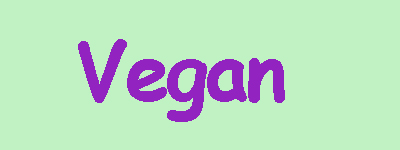 74) Having the locational and financial opportunity to be vegan.
74) Having the locational and financial opportunity to be vegan.

 … we look at acupuncture, and we perceive that acupuncture is Chinese Medicine. Acupuncture is only one tool in a tool kit that contains at least 14 different tools. The number one tool is the understanding that blood and energy flow together. … The reason people get sick is that blood and chi become stuck or stagnant.
… we look at acupuncture, and we perceive that acupuncture is Chinese Medicine. Acupuncture is only one tool in a tool kit that contains at least 14 different tools. The number one tool is the understanding that blood and energy flow together. … The reason people get sick is that blood and chi become stuck or stagnant. If you see somebody sitting in a chair and they’re slumped over, you say,
If you see somebody sitting in a chair and they’re slumped over, you say,

 Insufficiency would be not enough love, not enough laughter, not enough relaxation, not enough exercise, not enough water. That would be insufficiency.
Insufficiency would be not enough love, not enough laughter, not enough relaxation, not enough exercise, not enough water. That would be insufficiency.

 Absolutely right. And many people don’t even know the word acupuncture…
Absolutely right. And many people don’t even know the word acupuncture…
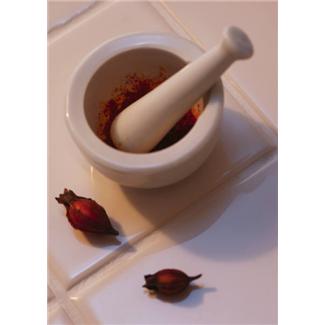 We now have a transparent way of looking at Traditional Chinese Medicine. It is not a mystery any longer. Our interview guest, Doctor Of Oriental Medicine has demystified it. He has talked about how to diagnose by asking, not only why you are there, but who is giving you pain. He mentioned how many tools there are in the arsenal of Chinese Medicine.
We now have a transparent way of looking at Traditional Chinese Medicine. It is not a mystery any longer. Our interview guest, Doctor Of Oriental Medicine has demystified it. He has talked about how to diagnose by asking, not only why you are there, but who is giving you pain. He mentioned how many tools there are in the arsenal of Chinese Medicine.
 Through the medical model to fix what ails, doctors are schooled in drug therapy. This is super fantastic since drugs are miraculous helpers. But, there are preventive disciplines that have little to do with pharmaceuticals; they teach us how to live and thrive without drugs.
Through the medical model to fix what ails, doctors are schooled in drug therapy. This is super fantastic since drugs are miraculous helpers. But, there are preventive disciplines that have little to do with pharmaceuticals; they teach us how to live and thrive without drugs.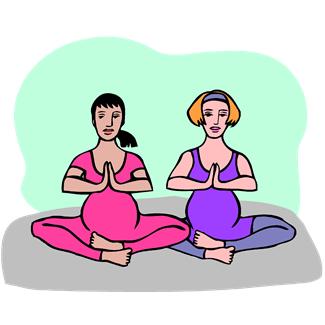

 Of course, there are loads of habits we have developed over the years. They are so ingrained, sometimes we can’t identify which are based on learned facts, on nebulous supposition, on familial traditions.
Of course, there are loads of habits we have developed over the years. They are so ingrained, sometimes we can’t identify which are based on learned facts, on nebulous supposition, on familial traditions. 3)
3) In 2013, these words of distinction are similar to the word, “natural” in the early 1980s. The word “natural,” according to the FTC (Federal Trade Commission) is a generic word that misleads and misrepresents. It can refer to anything that is minimally processed and not manufactured. It can be animal, plant and made from a substance that is naturally occurring in the earth such as petroleum. So its original intent is worthless. The words guru, master and mentor seem to be going in the same nebulous or altered direction.
In 2013, these words of distinction are similar to the word, “natural” in the early 1980s. The word “natural,” according to the FTC (Federal Trade Commission) is a generic word that misleads and misrepresents. It can refer to anything that is minimally processed and not manufactured. It can be animal, plant and made from a substance that is naturally occurring in the earth such as petroleum. So its original intent is worthless. The words guru, master and mentor seem to be going in the same nebulous or altered direction. It must have been in the 1980s when I was charging $40 to give a one-hour piano lesson. I had been paying $80 for the best teachers on the planet, Norman Gold and Sanford Gold (no direct ancestral relation to me or each other). And THE ever-popular, all-in-one New York music store offered the same duration piano lessons for $12 a pop.
It must have been in the 1980s when I was charging $40 to give a one-hour piano lesson. I had been paying $80 for the best teachers on the planet, Norman Gold and Sanford Gold (no direct ancestral relation to me or each other). And THE ever-popular, all-in-one New York music store offered the same duration piano lessons for $12 a pop. Next, from 1995 to the present, I’ve been in the martial arts business. And the same thing has happened. Throughout my martial arts career, I have seen people who trained for a year or two or people who trained for three months and won one tournament, open a school and hang a sign that said “Master Smith’s Martial Arts.” I have also experienced teachers along the way who were called “master” but did not possess the honesty, integrity, knowledge, skills or humanity to hold the title.
Next, from 1995 to the present, I’ve been in the martial arts business. And the same thing has happened. Throughout my martial arts career, I have seen people who trained for a year or two or people who trained for three months and won one tournament, open a school and hang a sign that said “Master Smith’s Martial Arts.” I have also experienced teachers along the way who were called “master” but did not possess the honesty, integrity, knowledge, skills or humanity to hold the title.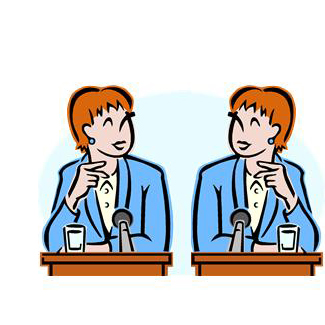
 It is not common knowledge that the black belt in martial arts is a symbol of a dedicated student who, if very conscientious, has learned no more than 10% of her subject. All over the world, though, because we can acquire testing fees and sell uniforms to go with new belts, this very fact is rarely emphasized or understood.
It is not common knowledge that the black belt in martial arts is a symbol of a dedicated student who, if very conscientious, has learned no more than 10% of her subject. All over the world, though, because we can acquire testing fees and sell uniforms to go with new belts, this very fact is rarely emphasized or understood.

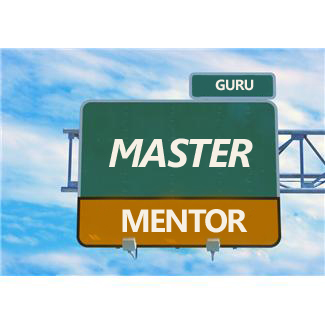
 A habit is defined as something whose cue causes a behavior that brings a reward, similar to an endorphin rush from the absence of pain, the joy of sex, walking around the lake or the thrill of completing a tai chi session. Yes, it’s nice to go and do a physical fitness routine. And it’s great that we intellectually “know” that it’s good for us. But, it’s superb if we turn our exercise into a habit.
A habit is defined as something whose cue causes a behavior that brings a reward, similar to an endorphin rush from the absence of pain, the joy of sex, walking around the lake or the thrill of completing a tai chi session. Yes, it’s nice to go and do a physical fitness routine. And it’s great that we intellectually “know” that it’s good for us. But, it’s superb if we turn our exercise into a habit. According to much research, the centers in the ventral tegmental area (VTA), the middle brain near the hippocampus, produce the dopamine that is connected with reward signals.
According to much research, the centers in the ventral tegmental area (VTA), the middle brain near the hippocampus, produce the dopamine that is connected with reward signals. Here’s the answer. We usually assume a simple position for meditation whether it be seated or standing. This physical posture consumes calories/energy/chi in order to maintain the position, even though we are not moving on the outside.
Here’s the answer. We usually assume a simple position for meditation whether it be seated or standing. This physical posture consumes calories/energy/chi in order to maintain the position, even though we are not moving on the outside.

 In the fast-paced world, it is rare that people hunker down and train in one area for any length of time. We usually engage in pinball education, meaning we don’t focus on one type of exercise before we jump to the next one. This type of learning reduces the chance that the exerciser will turn the training into a habit. It just stays as entertainment or the quick fix.
In the fast-paced world, it is rare that people hunker down and train in one area for any length of time. We usually engage in pinball education, meaning we don’t focus on one type of exercise before we jump to the next one. This type of learning reduces the chance that the exerciser will turn the training into a habit. It just stays as entertainment or the quick fix. But tai chi has other functions. There is scientific evidence that tai chi also improves flexibility, focus, respiration, muscle response, memory, mental attitude.
But tai chi has other functions. There is scientific evidence that tai chi also improves flexibility, focus, respiration, muscle response, memory, mental attitude.
 In order to learn tai chi, we have to concentrate on the actual movement we are doing. We do the same movement over and over again until it becomes familiar to us. Sounds a little like a habit, right? It is different from jumping rope, doing a dance routine, going to the gym because every time we do it, it is different. Tai chi movement involves every single part of the body. And we are different of mind and body every day. That is why it is different. As with any martial art, the movement is a tool for training and changing the mind. However, the physical way we execute the motion is related to our mood at the moment, what we choose to express, how relaxed our body is and whether we are working on warding off a potential attacker. These factors affect the movement and make it unique in the world of movement arts.
In order to learn tai chi, we have to concentrate on the actual movement we are doing. We do the same movement over and over again until it becomes familiar to us. Sounds a little like a habit, right? It is different from jumping rope, doing a dance routine, going to the gym because every time we do it, it is different. Tai chi movement involves every single part of the body. And we are different of mind and body every day. That is why it is different. As with any martial art, the movement is a tool for training and changing the mind. However, the physical way we execute the motion is related to our mood at the moment, what we choose to express, how relaxed our body is and whether we are working on warding off a potential attacker. These factors affect the movement and make it unique in the world of movement arts. The fact that tai chi involves mind, body and the way we live our lives, but all we have to do is watch our moving hand or foot to grasp our own attention is the very reason it can help change a habit. When we get the CUE, that urge, craving, onset of desire to behave habitually, we can
The fact that tai chi involves mind, body and the way we live our lives, but all we have to do is watch our moving hand or foot to grasp our own attention is the very reason it can help change a habit. When we get the CUE, that urge, craving, onset of desire to behave habitually, we can At the beginning, meaning for 3 to 4 weeks, if possible; it’s a good idea not to look at the new reward or evaluate it or compare it to the old reward. We have to remember it took lots of repetition to learn the old behavior, so give the new behavior some time to become beneficial to our lives before deciding to judge it. Otherwise the mind will play the old trick that the new behavior doesn’t work for us (which is. most of the time, a self-con so that we can go back to our old behavior).
At the beginning, meaning for 3 to 4 weeks, if possible; it’s a good idea not to look at the new reward or evaluate it or compare it to the old reward. We have to remember it took lots of repetition to learn the old behavior, so give the new behavior some time to become beneficial to our lives before deciding to judge it. Otherwise the mind will play the old trick that the new behavior doesn’t work for us (which is. most of the time, a self-con so that we can go back to our old behavior).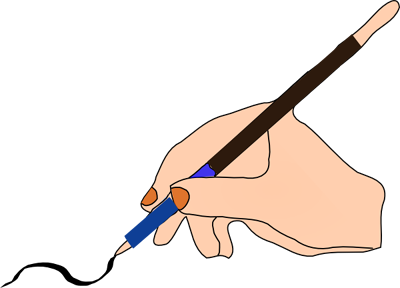 1) WRITE IT DOWN!
1) WRITE IT DOWN! 5) CALL SOMEONE
5) CALL SOMEONE Because of this training, we have the ability to consider taking the longer path if it is more strategic to get where we are going because we know patience, the first lesson in any martial art. We learn to take time out to consider, meditate, evaluate, even if, in physical combat, it is only a split second.
Because of this training, we have the ability to consider taking the longer path if it is more strategic to get where we are going because we know patience, the first lesson in any martial art. We learn to take time out to consider, meditate, evaluate, even if, in physical combat, it is only a split second.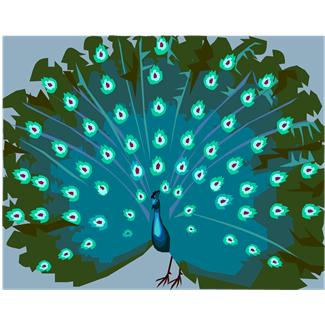 To the kung fu artist or other martial artist, there is no sense in acting with impatience, hostility, irrationality unless the behaviors of the other affect us. If our self-esteem is intact and does not depend upon how others see us or treat us, we have no need to pump ourselves up like peacocks on display being macho to find a mate or bearded dragon lizards who puff their necks to make themselves bigger when they sense a threat.
To the kung fu artist or other martial artist, there is no sense in acting with impatience, hostility, irrationality unless the behaviors of the other affect us. If our self-esteem is intact and does not depend upon how others see us or treat us, we have no need to pump ourselves up like peacocks on display being macho to find a mate or bearded dragon lizards who puff their necks to make themselves bigger when they sense a threat. When we are older, acting the way of the child does not utilize our reason and the wisdom from our experience we have taken so long to gain.
When we are older, acting the way of the child does not utilize our reason and the wisdom from our experience we have taken so long to gain. CONCLUSION
CONCLUSION
 What we often think about when the word “habit” comes up are overindulgence in eating, drugs, drinking alcohol, gambling, etc. These habits are behaviors we have repeated so many times they now require a considerable effort to stop, different from what would happen should we find out that a good habit, tooth brushing, did harm to us.
What we often think about when the word “habit” comes up are overindulgence in eating, drugs, drinking alcohol, gambling, etc. These habits are behaviors we have repeated so many times they now require a considerable effort to stop, different from what would happen should we find out that a good habit, tooth brushing, did harm to us. 4) Going to our medical professional to get drugs is what we do when we are sick. Nutritional counseling is not part of going to the doctor. Why? In our current health care system, there is no reimbursement for our doctors’ talking about food. What’s even more disturbing is that some 40% of medical schools only require 1 small course in nutrition. We have been trained that this is right, and we trusted this model until our rate of disease continues to soar.
4) Going to our medical professional to get drugs is what we do when we are sick. Nutritional counseling is not part of going to the doctor. Why? In our current health care system, there is no reimbursement for our doctors’ talking about food. What’s even more disturbing is that some 40% of medical schools only require 1 small course in nutrition. We have been trained that this is right, and we trusted this model until our rate of disease continues to soar. Unfortunately, we have lived our lives learning these habits. We have built habits around the idea of eating meat/poultry/fish/eggs/dairy for nutrition. The fact that there are a plethora of studies showing that these foods cause cardiovascular and chronic diseases means we will have to consider changing our habits and changing our knowledge to maintain health and, possibly, reverse sickness.
Unfortunately, we have lived our lives learning these habits. We have built habits around the idea of eating meat/poultry/fish/eggs/dairy for nutrition. The fact that there are a plethora of studies showing that these foods cause cardiovascular and chronic diseases means we will have to consider changing our habits and changing our knowledge to maintain health and, possibly, reverse sickness. The sad thing is, for the most part, we are not aware, especially in the poorer communities, that the nutritionally calculated value of drive up food is reduced to almost nil because of the negative health side-effects from eating it. The other equally devastating issue is that those of us who know that fast food is bad don’t know what to eat as an alternative for the same shoestring budget expense. Fortunately, children are learning plant-based alternatives and ways to budget for healthy food through their elementary schools. And they are bringing this information home. Go early ed teachers!
The sad thing is, for the most part, we are not aware, especially in the poorer communities, that the nutritionally calculated value of drive up food is reduced to almost nil because of the negative health side-effects from eating it. The other equally devastating issue is that those of us who know that fast food is bad don’t know what to eat as an alternative for the same shoestring budget expense. Fortunately, children are learning plant-based alternatives and ways to budget for healthy food through their elementary schools. And they are bringing this information home. Go early ed teachers! If the habits we have collected regarding medicine, treatment, food, lifestyle choices have been based on misinformation, it’s time to take a look at the foundation on which they were built. This is going to mean changing some habits. It’s also going to involve re-educating ourselves as to which medical professionals know what. Of course, it’s difficult to change doctors. But, if the ones we have are not integrating the necessary health habits into the mix, it might be time. At least, we need to do our own research about some of the things in this article.
If the habits we have collected regarding medicine, treatment, food, lifestyle choices have been based on misinformation, it’s time to take a look at the foundation on which they were built. This is going to mean changing some habits. It’s also going to involve re-educating ourselves as to which medical professionals know what. Of course, it’s difficult to change doctors. But, if the ones we have are not integrating the necessary health habits into the mix, it might be time. At least, we need to do our own research about some of the things in this article.






